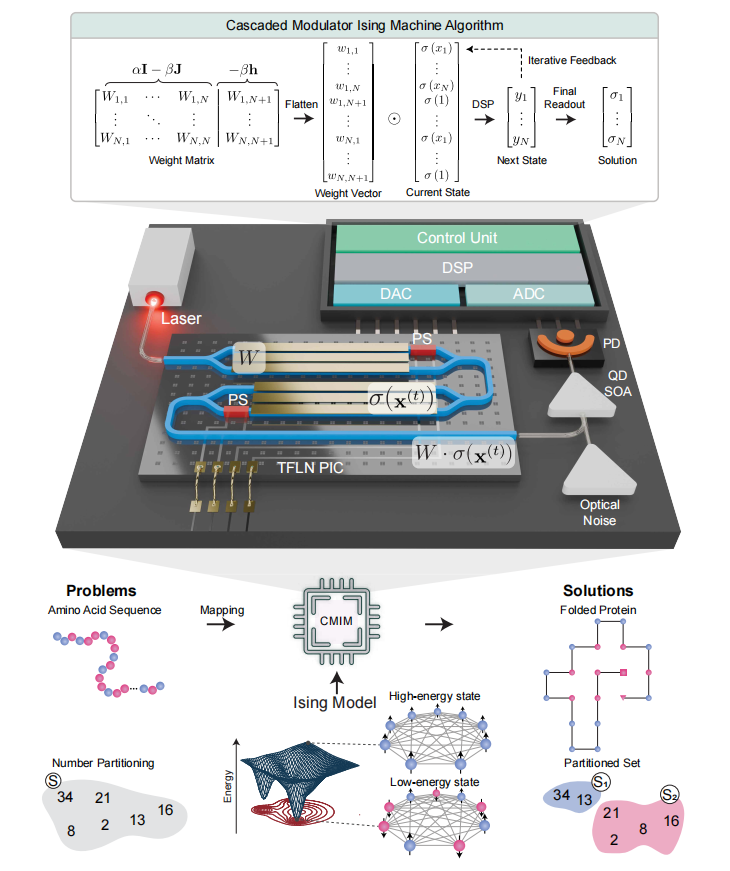
This paper introduces a programmable photonic Ising machine (CMIM) inspired by Hopfield networks, designed to solve combinatorial optimization problems such as protein folding, number partitioning, and Max-Cut problems. The system utilizes cascaded thin-film lithium niobate (TFLN) modulators, a quantum-dot semiconductor optical amplifier (QD SOA), and digital signal processing (DSP) to enable ultra-fast computation at room temperature, offering significant advantages over other photonic and quantum approaches.
Key highlights include:
Architecture: The system features a time-encoded recurrent architecture with two TFLN Mach-Zehnder modulators (MZMs) that encode spin vectors and weight matrices. It achieves a feedforward latency of 4.1 µs and performs over 200 Giga-Operations Per Second (GOPS), supporting up to 256 fully connected spins (65,536 couplings) or 41,209 sparsely connected spins (205,233 couplings).
High-Speed Operations: The machine operates at baud rates up to 128 GBaud, achieving fast convergence and high-quality solutions. In combination with DSP techniques, the system accelerates convergence and improves solution accuracy, overcoming challenges like signal degradation and synchronization errors.
Benchmark Performance: The system demonstrated best-in-class performance in solving optimization problems, including Max-Cut on large sparse graphs (2,000 and 20,000 spins), protein folding, and number partitioning. For example, the system reached 99.48% of the best-known Max-Cut value for the G22 graph and solved protein folding problems with up to 30 amino acids with 99% accuracy.
Scalability: The photonic Ising machine scales efficiently with problem size, achieving solutions for up to 41,209 spins, which represents a significant leap in photonic Ising machine capabilities. It operates without the topological embedding constraints faced by quantum annealers, offering better scalability and flexibility.
Applications: This work paves the way for scalable, ultrafast computing solutions in various fields, including optimization, neuromorphic processing, and analog AI. Its application to protein folding and number partitioning is particularly notable, showing that photonic systems can outperform traditional computational methods in solving complex, NP-hard problems.
In conclusion, the paper demonstrates a major advancement in the development of photonic Ising machines, capable of solving large-scale, complex combinatorial optimization problems efficiently and accurately, with applications in quantum computing, artificial intelligence, and optimization tasks.
OMeda (Shanghai Omedasemi Co.,Ltd) was founded in 2021 by 3 doctors with more than 10 years of experience in nanpfabrication. It currently has 15 employees and has rich experience in nanofabrication (coating, lithography, etching, two-photon printing, bonding) and other processes. We support nanofabrication of 4/6/8-inch wafers.